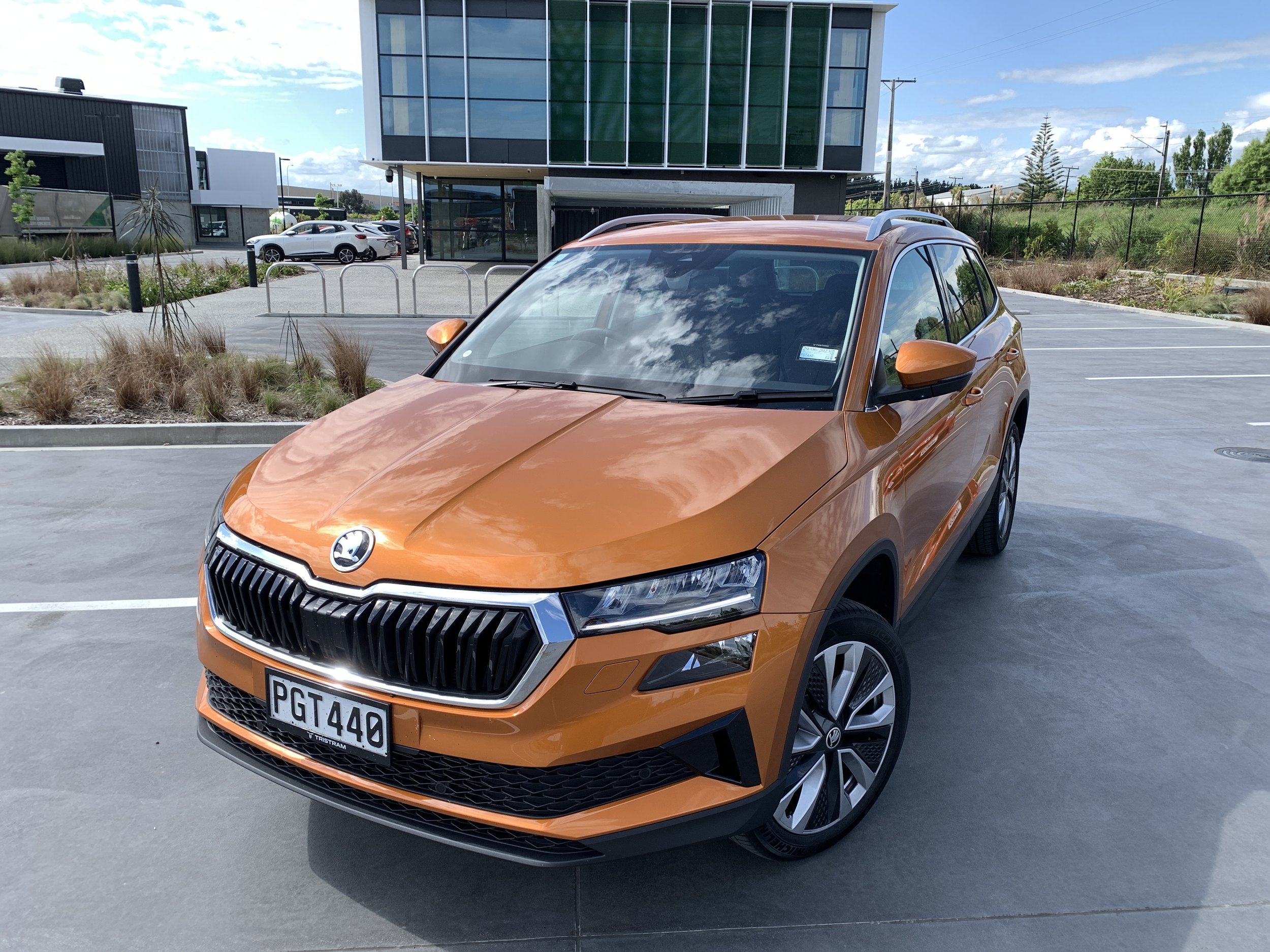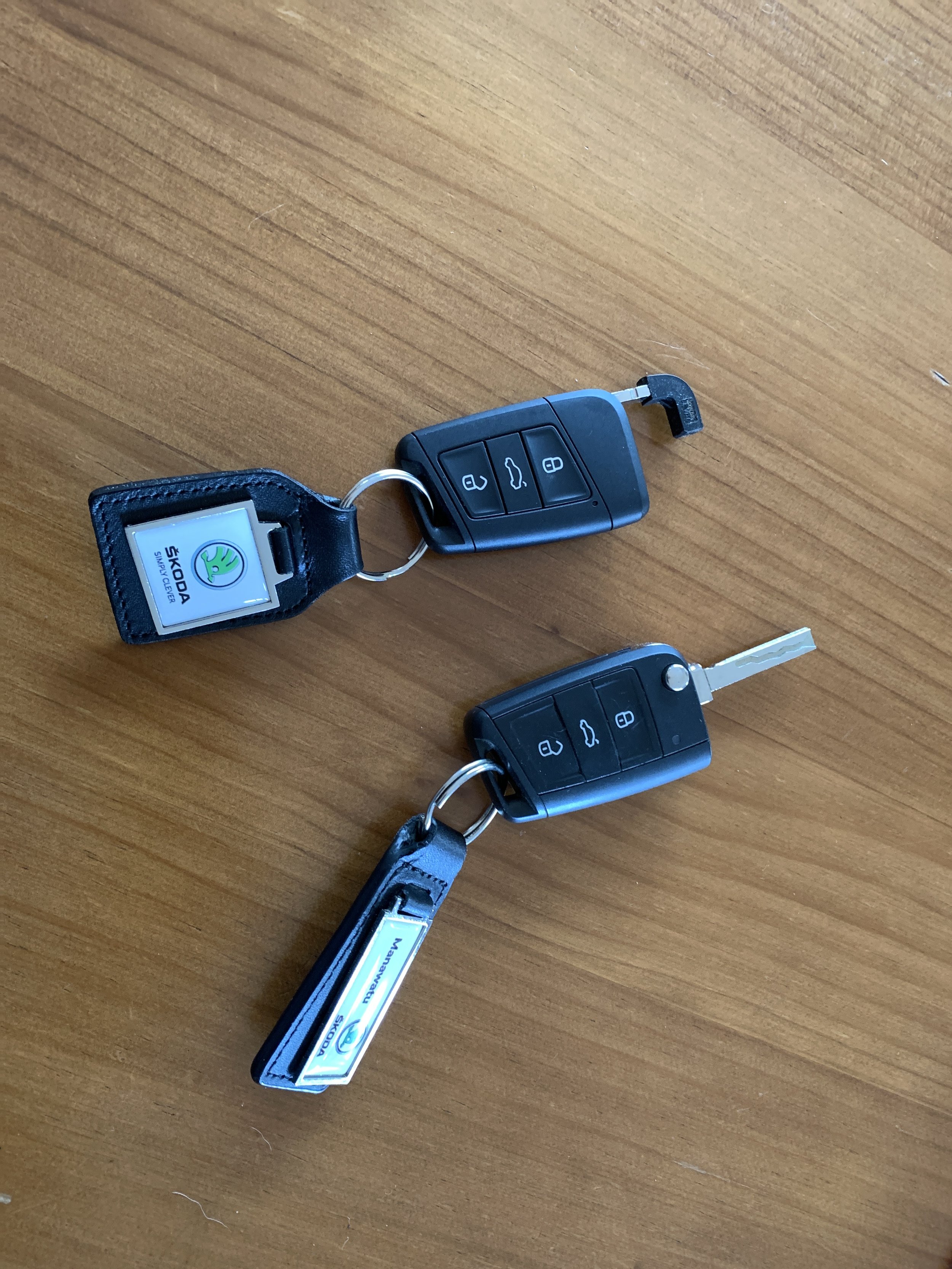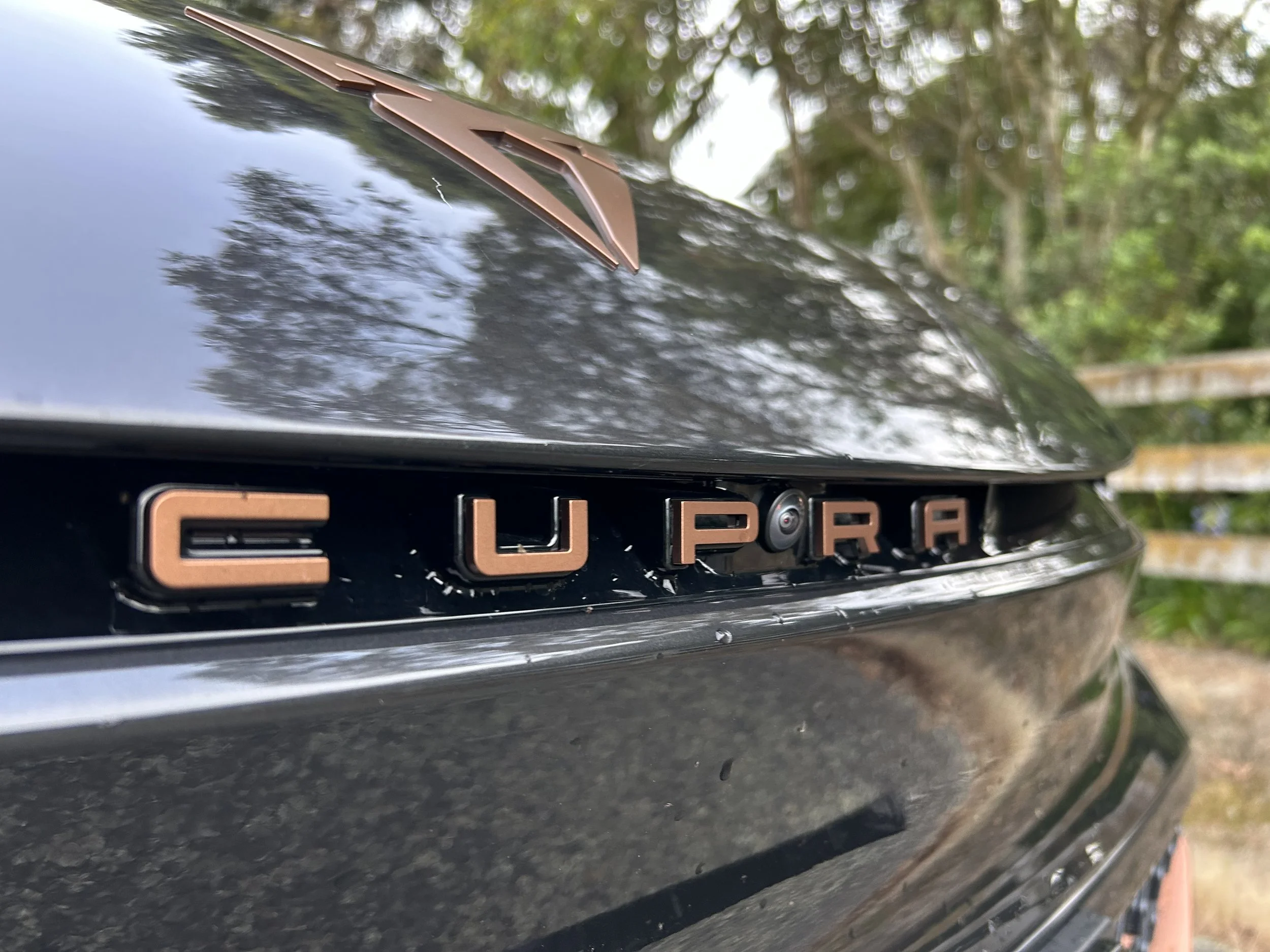Skoda Karoq 1.4 TSi Style roadtest review: Change of direction
/Revision for the sales horse edition of this compact goes well beyond a quick styling refresh; it now has a new persona.
Price: $51,990
Powertrain and economy: 1.4-litre turbocharged petrol, 110kW/250Nm, FWD, eight-speed auto, combined economy 7.2 litres per 100km.
Vital statistics: 4390mm long, 2025mm wide, 1603mm high, 2638mm wheelbase, luggage capacity 521/1630 litres, 18-inch alloy wheels.
Safety: Five star NCAP.
We like: Refined powertrain, styling update, wireless CarPlay.
Not so much: Front-drive and small petrol is a mission re-adjust, Plus pack has gone.
SAME car, different car. Different crowd?
Meet the sports utility that now re-interprets as a crossover; steering in a new direction to keep in touch with changing consumer whim.
The optimal original form Skoda Karoq was surely the one as I own it. A 2018 Style TDi with a 2.0-litre diesel, seven-speed direct shift gearbox, all-wheel-drive and optional Plus pack offering some tasty additionals. Full retail in the low $50,000 band.
These days, much the same money buys the subject of today’s test. Still a Karoq, still badged Style. Hugely different, nonetheless.
A big freshening has done more than the usually minor styling rejig. There’s a higher overall standard specification than I enjoyed, yet no chance to embellish it. the Plus has been deleted as a choice. To some, that’ll surely be a negative.
Diesel, the bold hope once, is a dirty word now, so little desired it’s been dumped. Buy a Style now and you get a 1.4-litre petrol … and it’s only driving the front wheels.
Anyone still hankering for the all-wheel alternate now has to shop in a higher price band. It’s purely with a 2.0-litre petrol Sportline that, in sitting $12,000 above the test car, has infiltrated into territory that, just a couple of years ago, was sole-occupied by a reasonable Kodiaq. How times have changed, right?
The Style, now, has a new personality. Really, it’s also in a new category. Simply from having regressed to the same drivetrain set-up most pure road cars adapt, the tester logically now re-establishes as a crossover. That is, a car that looks as if it could, but probably cannot.
A backward step? I’m as keen on a decent SUV as anyone, and I think the Karoq is better as I’ve bought into it, but let’s keep it real.
Even in the most mire-tailored format, this car was always on the edge of adventure. The one I picked did follow in the tyre tracks of a Subaru Outback, but only metaphorically. There’s conspicuous lack of residual mud and the off-road assists have been barely touched. I’m not saying it couldn’t cope with off-seal conditions. Just that I prefer it doesn’t.
I bought it because all-paw and diesel made it perfect for towing my race car for the short trip to and from the local circuit. Great traction, tons of torque, cost-effective consumption. Yup, it’s been brilliant.
Giving the test car a go at hauling was never a possibility; it didn’t have a hook. Yet even if it was so-equipped, I’d have been cautious. Check the small print. Whereas the diesel can handily haul up to 2100kg braked, the newbie limits to 1500kg. In theory that’s enough for my job. In reality, I’d be cautious. It’s not just about the hauling, but also the traction. Two wheels doing the work is good for most of the time, four is the way to go to achieve 100 percent capability in any condition.
But it’s still a Karoq, which means it’s still a sharp choice. According to a recent study out of the United Kingdom, the smartest drivers are behind this badge.
Well, good bones, right? Skoda has been riding the high-stepping horse of success for some time now, turning out one impressive model after another. All of its cars are based on the same mechanical package as an equivalent Volkswagen, a by-now-well-known fact upon which the Czech car maker has carefully and, sometimes brilliantly, traded.
Yes, there are also trade-offs. Skoda’s are sensible but more straight-laced, not least in presentation. The styling has improved over the years and the facelift is a further progression along that path, yet while the 1.4-litre was cleaner-cut in appearance than my car, and its burnt metallic orange paintwork also brightened its personality, it’s not as much a styling stunner as the Cupra Formentor, VW Tiguan and Audi Q3 with which it shares certain bits.
The more pronounced grille design and the revised headlamps up front, and some minor styling revisions at the back in the form of new light units, make it even more similar to the larger Kodiaq (another whose name has Inuit Eskimo roots) in its looks, to point you could very easily confuse the two at a glance. There is some nice detailing close-up. From further back, however, the silhouette is a bit ordinary.
Skoda seems to understand this and tries to make amends by always giving the car a set of smart-looking wheels, though in respect to that there’s a twist. Actual alloys (19-inch Manaslus on mine) were a thing in 2018. The 1.4 goes down a different path, with alloys that arent’. What you get are convincing yet faux plastic covers atop an actual alloy.
This Procyon design approach is for aero efficiency. You can whip the covers off to fully expose rims that are attractive in their own right, though they lack the finishing touch of wheel centres. Skoda can provision those … but as an option. The 1.4 also runs on 18 inch rims, with 215/50s rubber, whereas mine is on 19s with 225/145s.
I’m not fussed by Karoq not being the prettiest choice among even the square-cut offerings in this well-stocked category. Skoda cars to me are foremost about being sensible efficiency. In that respect, there’s more to the restyling than meets the eye.
The car has undergone all sorts of subtle alterations, some basically invisible, to helping the aerodynamics and, in turn, lower the CO2 emissions. Changes under the skin include active cooling shutters that close when not required, enclosures for the underbody and covers around the fuel tank. Skoda reckons a 15 percent improvement, old model versus new, when comparable engines are in the picture.
Within the cabin, it’s all about rendering further improvement. The Karoq’s dash and fascia were already more sculpted than the flat, blocky look of the Kodiaq; most of the main architecture remains unaltered.
There are two options for the dash display. Buy to recommended retail and the car arrives with the same design appearance as before, with big dials for the speedo and tachometer and a panel in between showing an array of driver-selected sub menus. Spend an additional $1000 and this upgrades to a full digital display, everything represented electronically. The price would seem money well spent.
The central touchscreen is the same size as before, but is now a higher definition LCD display of the kind is slowly becoming a fixture in all Volkswagen Group cars. The home screen takes a more upmarket appearance and the reversing camera view is sharper.
The associated infotainment update has the same functionality as previously, but now you can wireless link a phone to achieve Apple CarPlay/Android Auto, which is a big step forward. This makes another audio-related update, to contemporary USB-C connectors, less vital, though still welcome. The USB-C input you would conceivably use for the phone retains in the same awkward spot as my car’s USB, within a cubby forward of the gear selector. Awkward because any cable has to input vertically, rather than horizontally, as is far more orthodox. From experience I can tell you the problem with Skoda’s approach is that just the softest touch risks disrupting the connection.
It maintains keyless start, though the key fob itself has changed, updated to a slimmer version, and it gets a new steering wheel, on which all the control buttons are flush-mounted; both agreeable changes. Pleased, though, they’ve not re-engineered the highly useful flexible central storage/cup holder layout, with the bobbled cup holder bases that allow you to open a bottle of drink with one hand.
In terms of interior dimension, nothing alters. That’s great. Even though best suited for four adults than five, it’s a roomy cabin with excellent headroom and, because the seats sit slightly high, good leg space.
The front chairs are well-shaped and extremely comfortable; moreso in the cloth featuring now than the leather I have. The bigger attraction, especially to Mrs B (as she feels the cold), is that they are now heated.
Versatility-wise, the 1.4 still configures as standard with simple flip down back seats to increase the already generous capacity of the boot in which Skoda thoughtfully provisions all manner of hooks, luggage dividers that velcro to the carpet and tie-down nets.
With the Plus option removed, though, so too is Kiwi owner access to a prized delivery. I don’t make full use of the varioflex rear seats as often as I should, but when I do I never regret having ticked that box. It’s a brilliant design. The rear seat is actually three segments, all of which not only fold flat to increase load space like the standard items, but also lift out completely, either individually or altogether, in which case the Karoq becomes an impromptu van with a whopping 1810 litres’ space.
Karoq achieves with parking sensors, autonomous emergency braking, automatic braking during parking and adaptive cruise control.
Out on the road, the Karoq drives well, but stops short of being an entertainer; it’s not about high-speed precision. Sense it has a more fulsome ride quality and feels more deft that the diesel is unsurprising. It’s about 165kg lighter. There’s also less mechanical noise, of course, but also less tyre noise.
The 1.4 provisions performance sufficient for a car of the Karoq's size, but what impresses more is how smooth and reasonably quiet it is for the majority of the time; only raising its voice when really worked. Even then, it still slips softly through its eight forward gears.
It cannot beat my diesel on thrift – Skoda reckons this petrol will average 7.2 litres per 100km, and I saw just under 7, which is fairly good, but that’s not a threat to my engine, which currently shows a long-term average of 6.2 – and is not much better for CO2 (both engines are in the neutral zone).
On paper, the diesel has ‘just’ a 50Nm advantage over the petrol, which is credited with 250Nm. In actual driving, you’d think the compression ignition was much more muscular. For sure, the petrol’s strength is on in the power side of things; it’s zingier, more reactive and, of course, revs so much harder. In short, it makes the Karoq more car-like. All well and good … if zipping around the shops is the primary application. Maybe a bit less so if you want it to be a weekend toiler, with hauling on the schedule. Just saying.
That’s the nub of it really. The Karoq remains a handy asset for Skoda, because it’s still pretty much as practical as ever and is in a category that is winning lots of consumer attention. Within that pack, it’s still up near the front, and while the car as a whole is not as I’d prefer it, I did enjoy the interior improvements. If only they could transfer to mine!
With battery-involvement all the rage, you might wonder why Karoq hasn’t got, and won’t get, the plug-in hybrid option already in the Superb and Octavia and some incoming VW cars?
It’s because of Enyaq, Skoda’s first electric car, soon to arrive here. Not a rival. Not yet. Though they’re of similar size and look, and though Skoda has yet to release pricing, EVs have an unavoidable premium due to the cost of their hardware.
Bear in mind that while Skodas are always cheaper than VW equivalents, the least expensive of its ID.4 sister ship behind the parent badge is just $10 beneath the Clean Car rebate cut-off of $80,000. Even so, electric is the way forward. So, conceivably, Enyaq will be the car that takes tomorrow’s buyers of Karoq-style fare into the future.
























